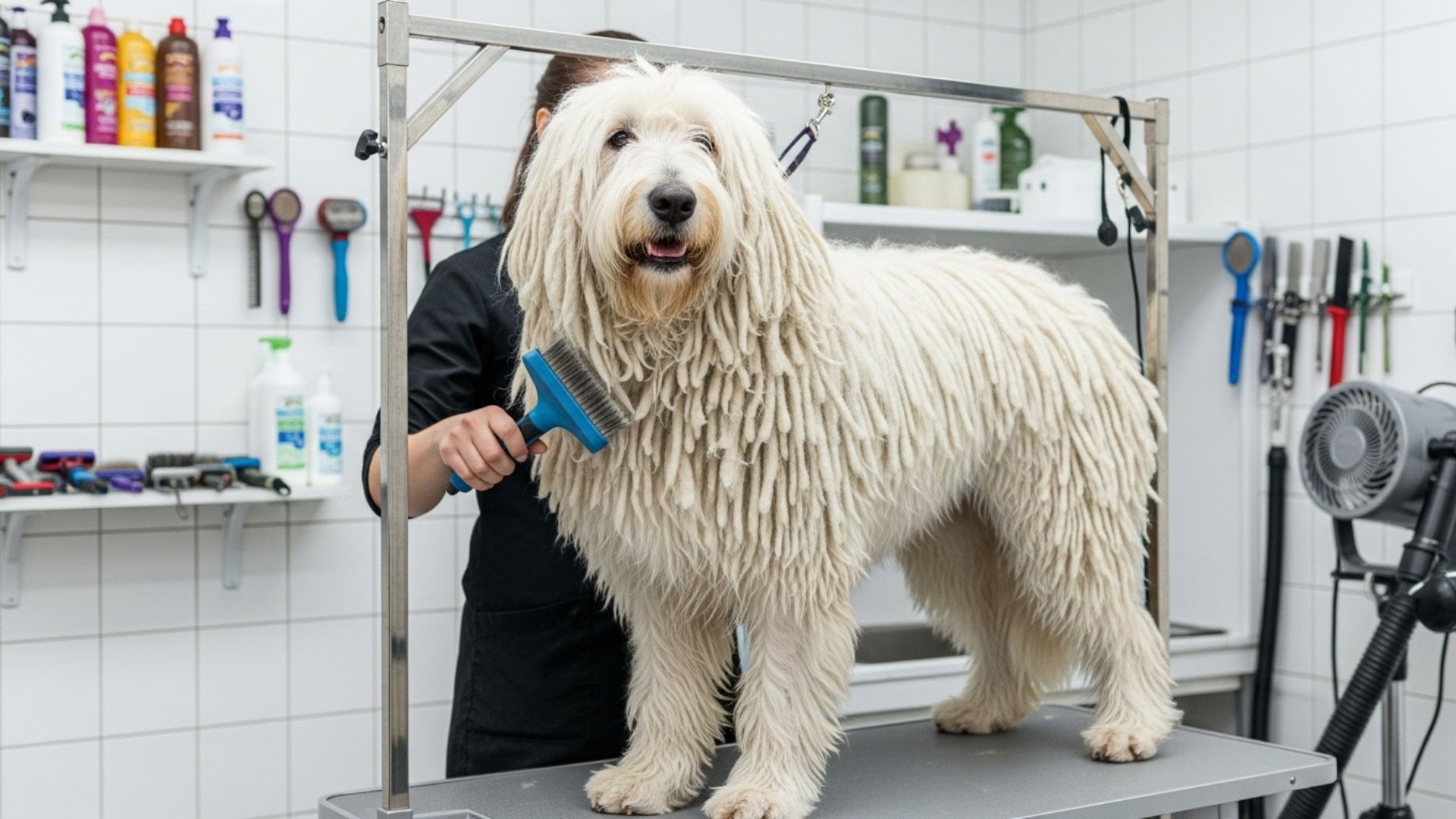Caring for a dog is a rewarding experience, but every breed comes with its own set of needs. While all dogs require love, exercise, and training, some have care routines that go far beyond the basics.
From specialized grooming sessions to unique behavior management, certain breeds demand extra time and attention to truly thrive. Understanding these needs is essential for choosing a dog that fits your lifestyle and ensures a harmonious relationship for years to come.
For busy pet parents, selecting a breed with manageable maintenance requirements can make all the difference. Low-maintenance dogs typically require less grooming, moderate exercise, and minimal training, making them ideal companions for individuals with packed schedules.
They offer all the joy of dog ownership without overwhelming daily responsibilities—perfect for those who want a furry friend but can’t commit to high-maintenance care.
In this article, we’ll explore dog breeds with unique maintenance routines, highlighting what makes each one stand out.
Dog Breeds with Unique Maintenance Routines
1. Puli
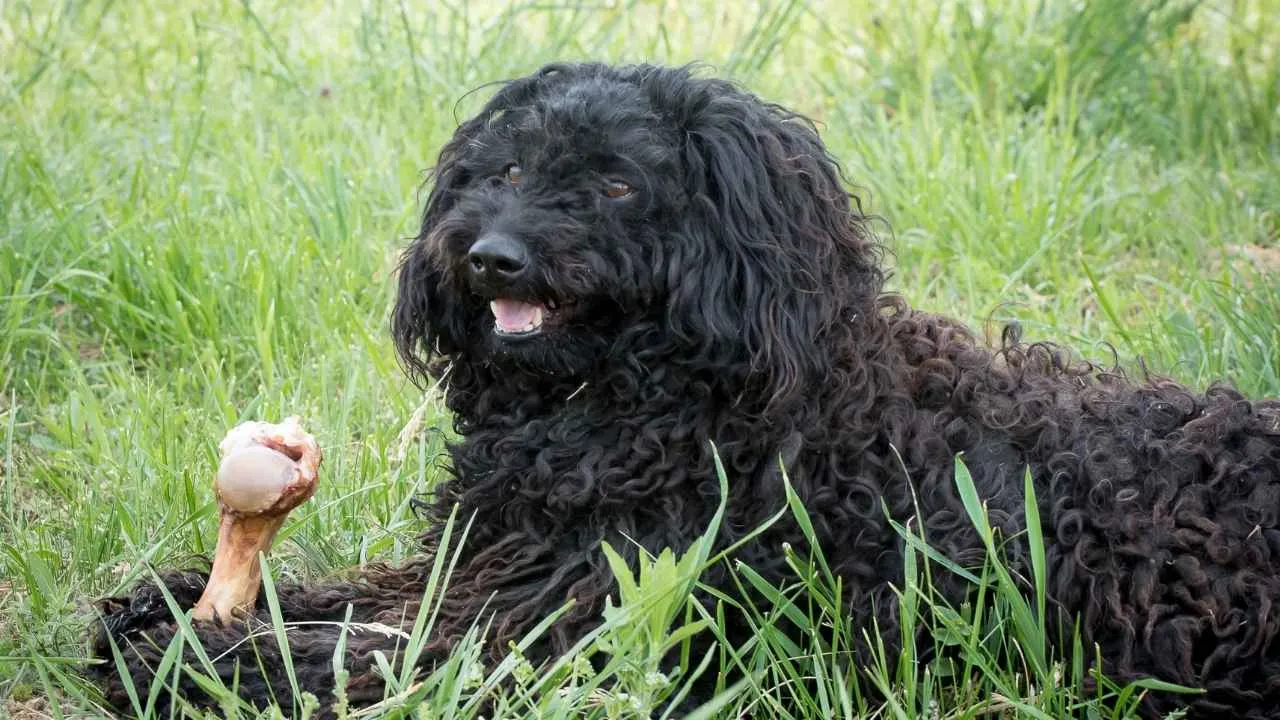
The Puli, also known as the Hungarian Puli or Hungarian Water Dog, is a striking herding breed known for its unique corded coat.
The Puli’s coat, resembling dreadlocks, provides protection from harsh weather and was developed to help it work in the field, even in the harshest of conditions.
According to Britannica, the Puli is a small sheepdog breed that was introduced to Hungary around 1,000 years ago by the Magyars, the early Hungarians, who valued the breed for its herding abilities.
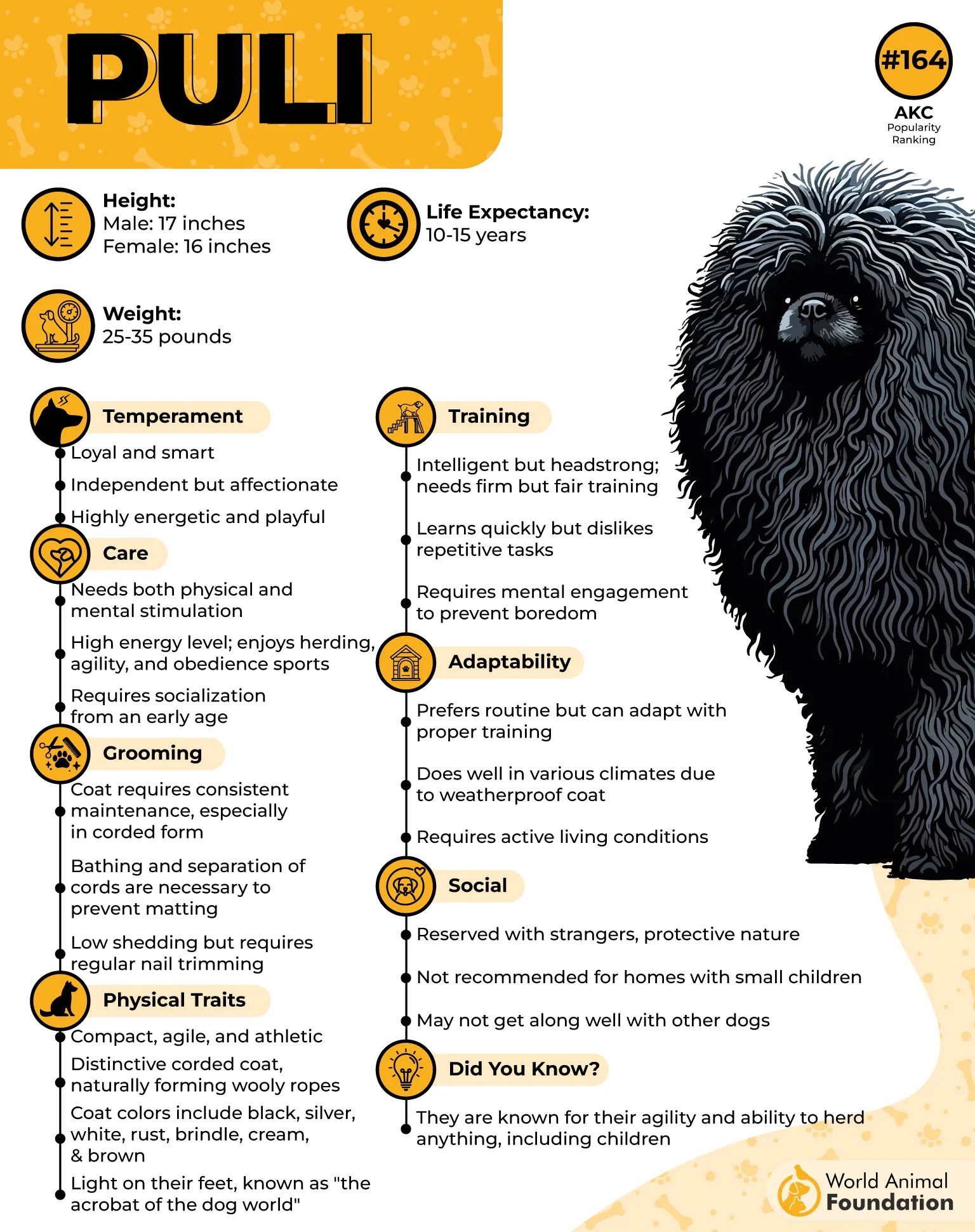
What makes the Puli’s grooming needs special is its coat. The long, corded coat requires significant maintenance to prevent matting, which is essential for keeping the cords neat and attractive.
As the Puli matures, the cords naturally form by the age of one, and by the time the dog reaches four, the cords can grow long enough to reach the ground. Proper grooming involves separating the cords by hand and ensuring they remain clean and dry, which can take several hours.
Some owners trim the coat for easier maintenance, though the traditional corded look is what many Puli enthusiasts prize.
Due to their thick and dense coat, Pulik are low shedders, making them a good option for allergy sufferers. However, their grooming process is not for the faint of heart. If you’re willing to invest time and effort into maintaining their coat, you’ll have a loyal and hardworking companion.
Fun Fact: The Puli’s corded coat is not only beautiful but functional, designed to keep the dog dry and warm while working in wet and cold conditions.
2. Komondor
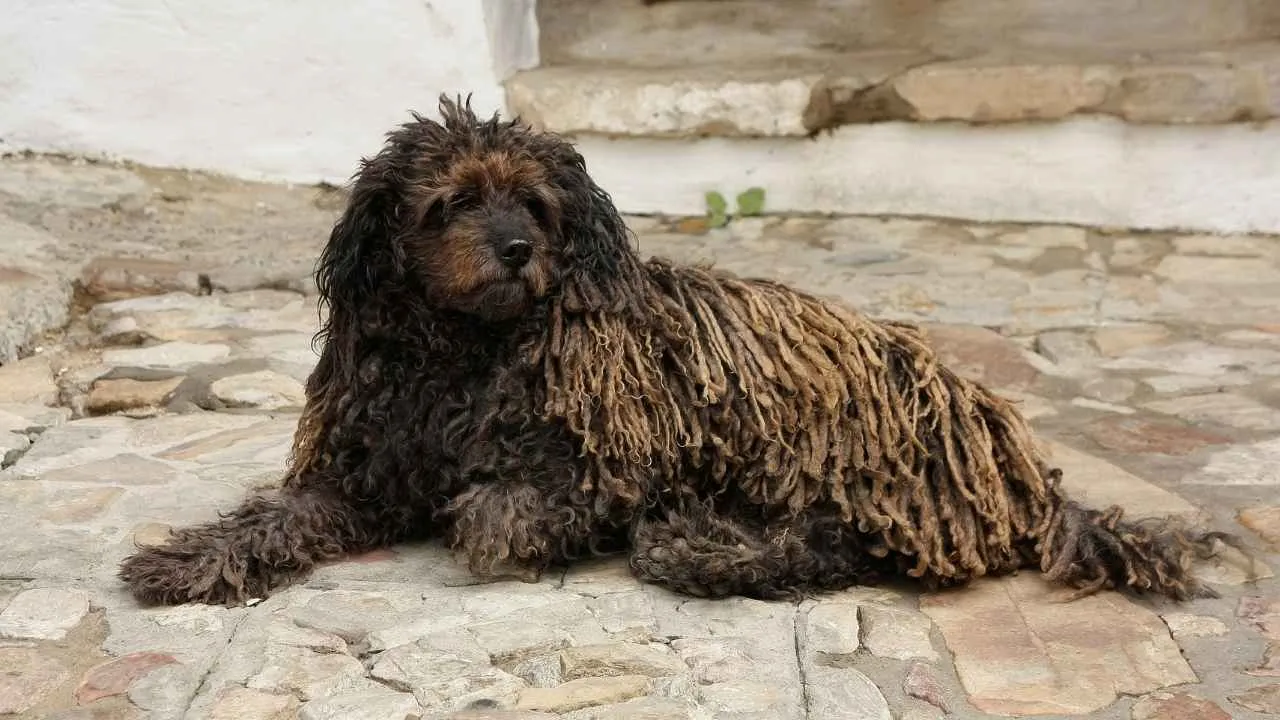
The Komondor is also known as the Hungarian flock guardian. According to PetMD, the Komondor is known for its distinctive appearance, covered in a heavy coat of white cords, often referred to as “dreadlocks.” This unique coat gives the breed one of the most recognizable looks in the dog world.
While visually striking, the Komondor’s grooming needs are quite demanding. Their long, felted cords require careful maintenance to keep them in good condition, and it’s essential to separate these cords to prevent matting.

A key feature of the Komondor’s grooming routine is the avoidance of regular brushing. Instead, its cords should be separated manually to keep them healthy and prevent debris buildup.
This process ensures that the cords don’t become tangled, a task that can take a considerable amount of time. Although the Komondor’s coat should not be washed frequently, it requires occasional baths, and it’s important to dry the coat thoroughly afterward, as the dense hair can trap moisture.
Due to their large size and independent nature, Komondors are best suited for experienced dog owners. Their grooming schedule is not for the faint-hearted, but it will reward dedicated caretakers with a striking and unique appearance. Be prepared to invest significant time to maintain their iconic “mop” look while keeping their coat in optimal health.
3. Chinese Crested

The Chinese Crested is a small, affectionate breed known for its unique appearance. With its hairless body and tufts of fur on its head, feet, and tail, it stands out as one of the most distinctive dog breeds.
According to WebMD, Chinese Crested dogs are small in size and known for their incredibly playful nature, making them lively and affectionate companions.
Sometimes called the “Chinese Hairless” or “Chinese Royal Hairless,” this breed is known for being playful, lively, and loving, making it a fantastic companion for families or individuals who enjoy close bonds with their pets.

Though the Chinese Crested is small and relatively low-energy, it still requires regular exercise to stay healthy. The breed enjoys interactive play sessions and daily walks, which can help keep them physically and mentally stimulated.
However, their exercise needs are moderate compared to other active breeds, making them suitable for apartment dwellers or those with a busy lifestyle. It’s important to remember, however, that they are prone to sunburns due to their hairless bodies, so outdoor play should be done with sun protection in mind.
A crucial aspect of owning a Chinese Crested is managing their grooming routine, especially if they are the hairless variety. Their skin needs protection and regular moisturizing, while the Powderpuff variety requires brushing to prevent matting. These unique grooming needs contribute to the breed’s high maintenance level.
Fun Fact: Despite their low activity requirements, Chinese Cresteds are incredibly agile and can excel in dog sports such as agility competitions.
4. Afghan Hound
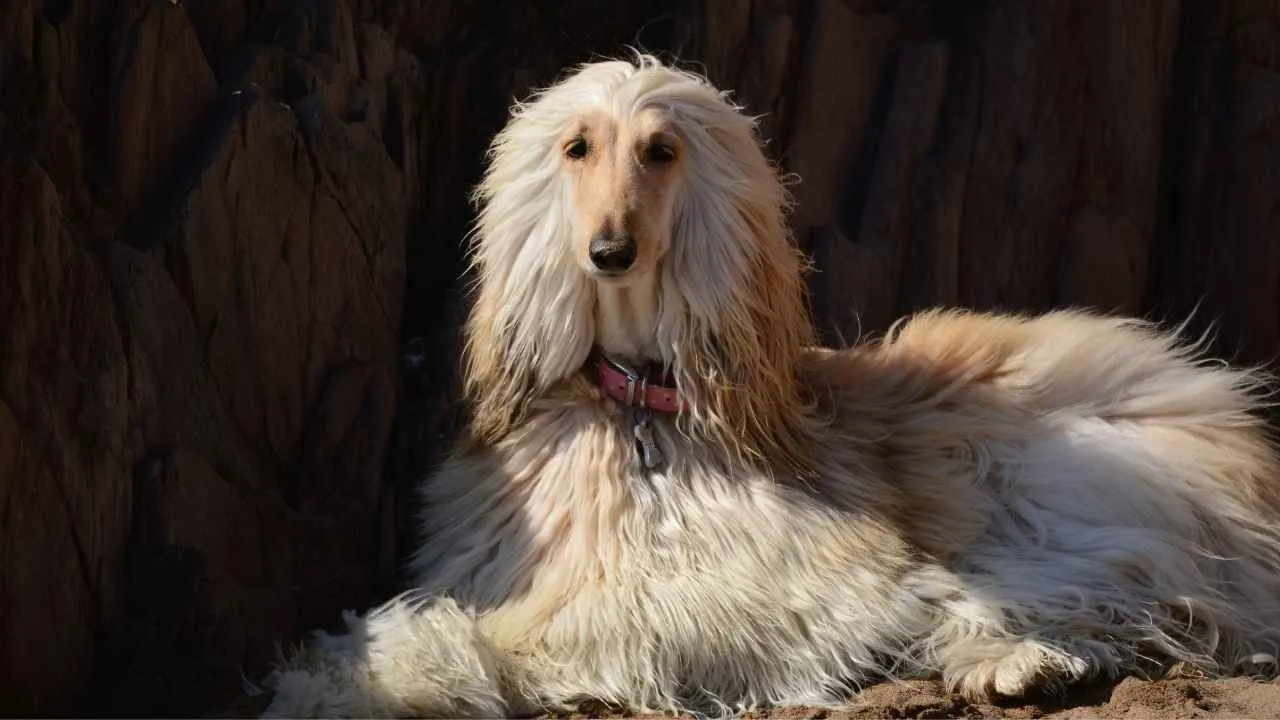
The Afghan Hound, also known as the “Greyhound of the East,” is an elegant and graceful breed originally from the rugged mountains of Afghanistan. With a distinct, long, flowing coat, this dog was bred for hunting large game, relying on speed, agility, and keen eyesight.

Afghan Hounds require a unique grooming routine due to their luxurious coat, which demands frequent attention. Regular brushing is essential to prevent tangles and mats, and some owners opt for professional grooming to maintain the coat’s beauty.
This breed’s coat isn’t the only maintenance consideration; they also need regular exercise to stay fit and healthy, which makes them perfect for active owners.
Their independent nature can make training more challenging, but their intelligence shines when they are given tasks that engage their mind. While not as high-maintenance in terms of health, Afghan Hounds may experience some breed-specific conditions like hip dysplasia, so regular veterinary checkups are recommended.
Fun Fact: The Afghan Hound’s stunning coat was initially designed to protect them from the harsh climate of Afghanistan’s mountainous terrain, allowing them to hunt in extreme weather conditions.
5. Bedlington Terrier
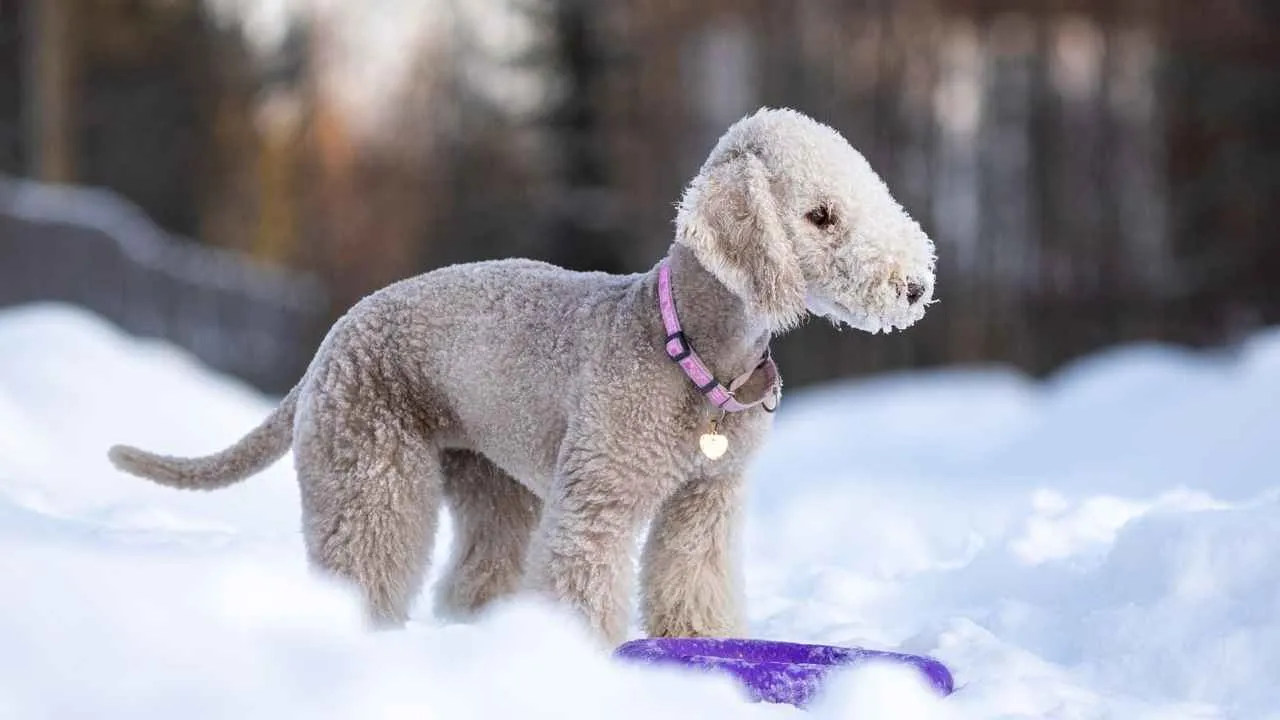
The Bedlington Terrier, a breed with a unique history and charming appearance, is also known as the “Rothbury Terrier.” With its distinctive lamb-like coat, the Bedlington Terrier is as much a sight to behold as it is a loyal companion.

What sets the Bedlington Terrier apart in terms of maintenance is its grooming routine. Their soft, curly coat requires regular upkeep to avoid matting, with professional grooming every couple of months and brushing several times a week.
This unique coat also contributes to their status as a high-maintenance breed, especially for owners unfamiliar with the grooming process.

Training the Bedlington Terrier can be challenging due to their independent and sometimes stubborn nature. While intelligent, they tend to get bored with repetitive tasks, requiring varied and engaging training techniques. Socialization from an early age is crucial to help them adjust to new environments and people.
Fact: Despite their small size, Bedlington Terriers were once prized for their ability to hunt and trap larger animals like otters and badgers, showcasing their agility and strong prey drive.
6. Bergamasco Sheepdog
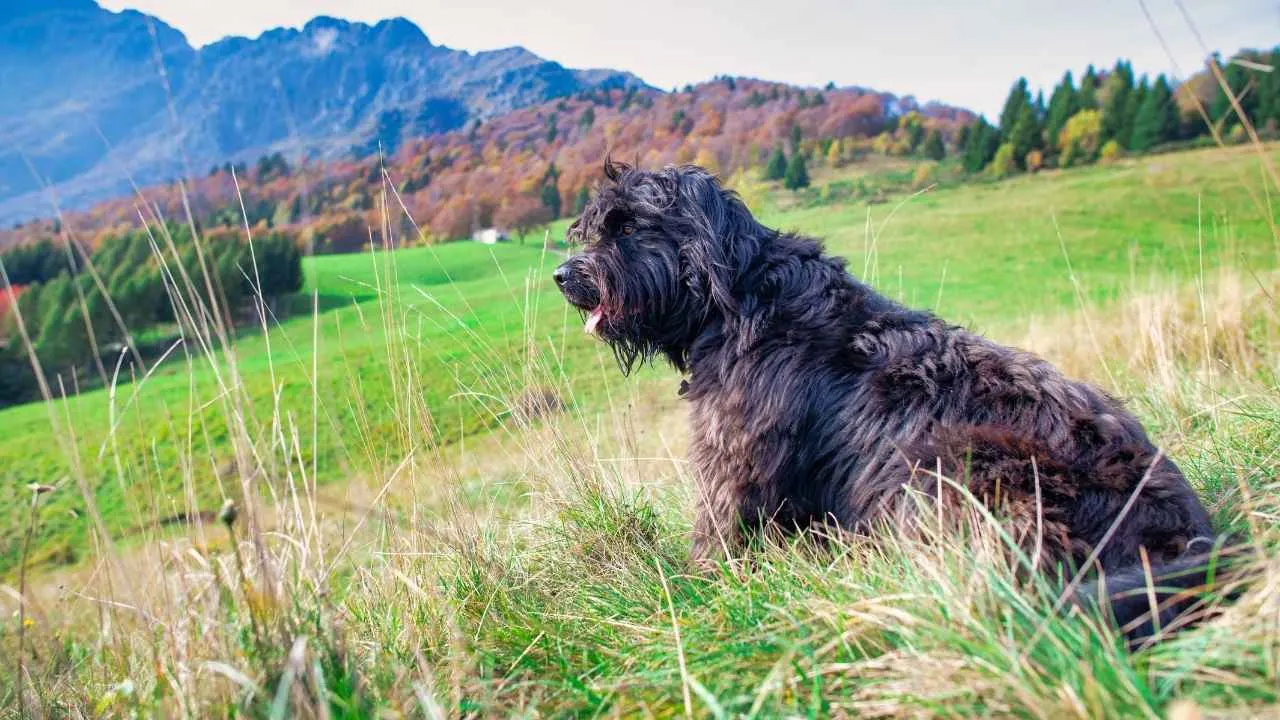
The Bergamasco Sheepdog, a medium-sized working breed, is known for its distinct, long, and greasy coat that forms flat mats. This coat requires unique grooming to maintain, making it one of the more high-maintenance breeds.
These dogs are friendly, intelligent, and great with families, but their coat demands considerable attention to keep it from matting. Additionally, their bond with their owners is strong, often seeking physical closeness due to their natural herding instincts.

What makes the Bergamasco Sheepdog particularly prone to specific environmental needs is its unique coat and herding background. The coat, while protective, can trap environmental allergens like pollen, which may affect allergy sufferers.
Despite their robust appearance, they are not highly active dogs but need enough space to roam and enjoy mental stimulation to stay content. Their relatively calm temperament makes them good companions, but regular grooming is essential to prevent discomfort or health issues related to matted fur.
This breed also tends to be independent, which means they prefer doing things in their own way. Training should be consistent, yet flexible enough to accommodate their self-reliant nature. The Bergamasco is more about cooperation than strict obedience, and proper handling is key to its development.
Fun Fact: The Bergamasco’s thick, corded coat takes several years to fully mature.
7. Xoloitzcuintli
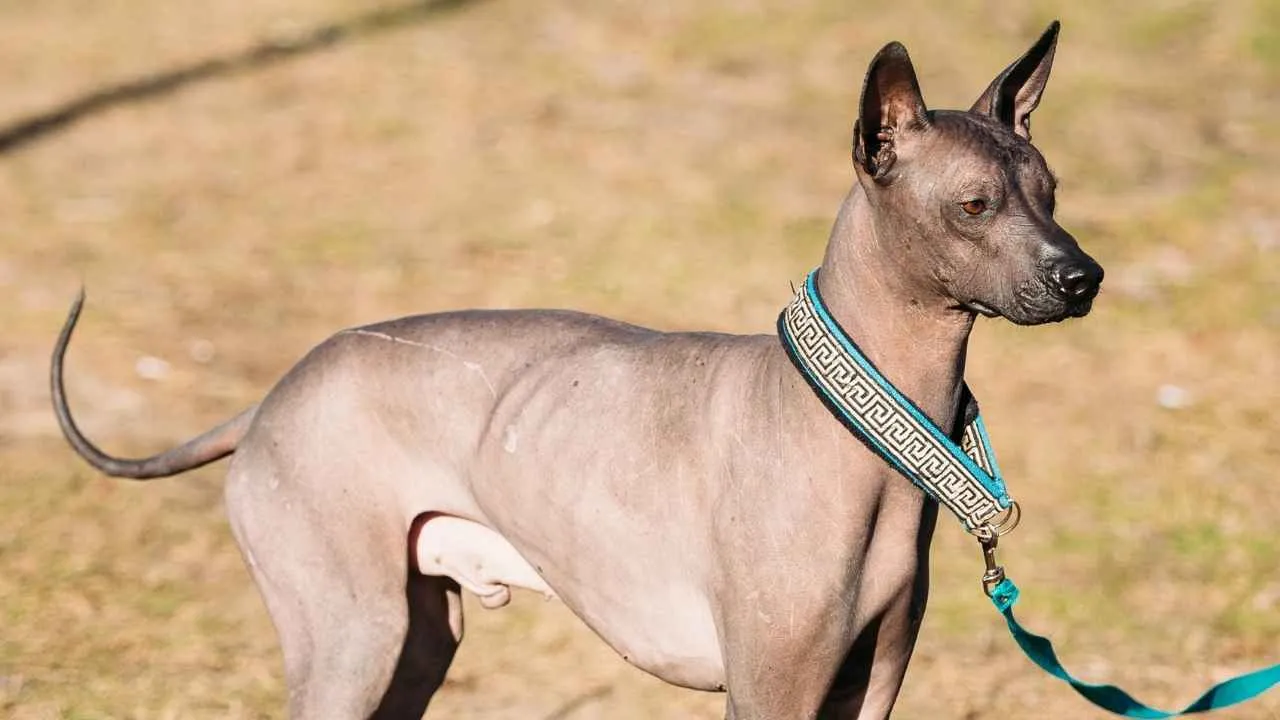
The Xoloitzcuintli, also known as the Mexican Hairless Dog, is a distinctive breed recognized for its hairless coat. This ancient dog is famed not only for its unique appearance but also for its particular care needs, making it one of the breeds with unique maintenance routines.
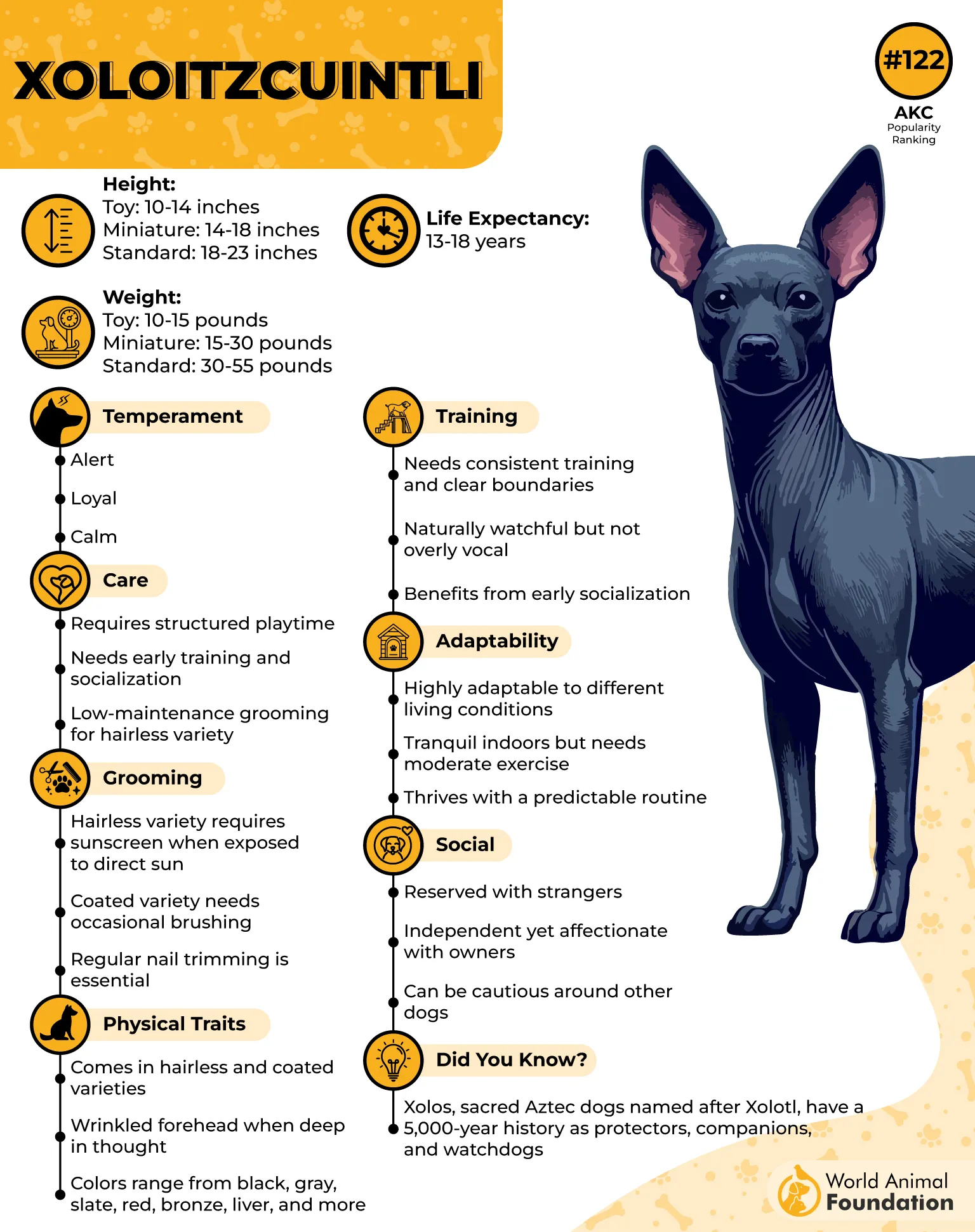
The Xolo’s hairless variety demands significant attention to its skin care, as it is vulnerable to sunburn and dryness. Owners must apply sunscreen on sunny days, and moisturizing lotions are essential to keep their skin hydrated.
Regular bathing is necessary to remove oil buildup, and during adolescence, owners may face acne and cradle cap, which requires careful management. The coated variety of Xolos, though less demanding in terms of skin care, still requires minimal brushing.
In terms of health, the Xoloitzcuintli is relatively healthy but can experience dental issues, particularly in the hairless variety, which may have a reduced number of teeth. Regular vet visits are essential to monitor these issues and manage any skin concerns.
Xolos are also known for their calm demeanor, making them loyal companions, but early socialization is crucial to prevent them from becoming overly wary of strangers.
Conclusion
Dogs with distinctive care needs often bring just as much charm as they do responsibility, and understanding those routines is key to keeping them happy and healthy. Many high-maintenance dog breeds—from pups with a luxurious double coat to those requiring daily brushing—thrive when their unique needs are met.
Even breeds typically seen as family favorites, like the cocker spaniel or chow chows, rely on consistent grooming and thoughtful routines to support their overall well-being. Some, such as those with a thick double coat or dense double coat, also need seasonal care to manage shedding and temperature changes.
For more active pups, including border collies, jack russell terriers, and intelligent and energetic dogs, tailored schedules that combine exercise and mental stimulation with proper coat care are essential.
And while many working dogs and gentle giants like Bernese Mountain Dogs or Portuguese Water Dogs can be demanding, even smaller breeds—such as pugs, high maintenance, cavalier king charles spaniel, or Labradoodles high maintenance—may need extra attention or support with separation anxiety.
In today’s growing pet industry, understanding these grooming demands and energy needs helps pet parents care for their dogs just as they deserve, even around other dogs or other animals.


